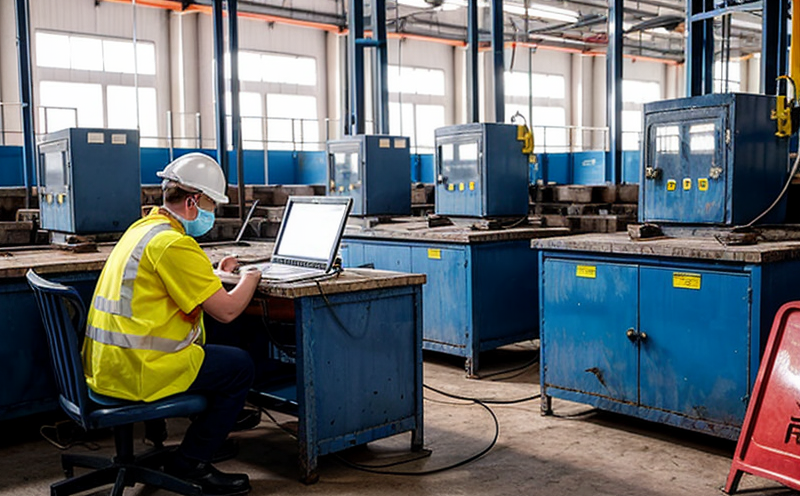EN 374 Chemical Protective Gloves Testing
The European Standard EN 374-1:2016 specifies requirements and test methods to determine the resistance of chemical protective gloves against various types of chemicals. This standard is crucial for ensuring that workers in industrial manufacturing environments have adequate protection from hazardous substances. Occupational health & safety testing, especially when it involves chemical exposure, demands rigorous adherence to international standards.
TheEN 374-1 test evaluates the glove’s ability to protect against liquids and aerosols by subjecting them to a series of chemicals under controlled conditions. The standard covers four classes of chemicals: Class A (solvents), Class B (acids), Class C (alkalis), and Class D (other). Each class has specific concentrations, temperatures, and exposure times that the gloves must withstand without permeation or degradation.
Testing typically involves a glove sample being placed in contact with a defined quantity of chemical for a set period. The test apparatus includes a container holding the chemical solution at a specified temperature. After the prescribed duration, the glove is inspected to check for any signs of permeation (penetration through the glove) or degradation (loss of integrity). Permeation and penetration are critical indicators; if either occurs, the glove fails the test.
The process is detailed in ISO 17492:2008, which provides supplementary information on how to perform these tests. Compliance with EN 374-1 ensures that manufacturers meet the necessary safety requirements for their products, thereby enhancing worker protection and minimizing risk in potentially hazardous environments.
Understanding the role of each chemical class is essential for quality managers looking to ensure product compliance. For instance, Class A (solvents) includes volatile organic compounds which are common in many manufacturing processes but can be highly toxic if not contained properly. Ensuring gloves meet these stringent requirements is critical for protecting workers from inhalation or skin contact.
The testing process itself involves precise preparation of the chemical solutions and careful handling to ensure accurate results. The test setup typically includes a programmable temperature-controlled incubator where the glove samples are exposed to the chemicals. This controlled environment ensures consistent and repeatable test conditions, which is vital for obtaining reliable data.
Benefits
The benefits of EN 374-1 testing extend beyond compliance; it plays a pivotal role in enhancing occupational health & safety within industrial manufacturing environments. By ensuring that workers are equipped with gloves that meet these stringent standards, companies can significantly reduce the risk of chemical exposure leading to injuries or illnesses.
From an operational standpoint, meeting such standards demonstrates a commitment to worker well-being and can improve employee morale and retention rates. Moreover, compliance reduces the likelihood of workplace incidents, which can lead to costly downtime and legal liabilities.
The testing process itself serves as a robust quality assurance measure, ensuring that all gloves are uniformly tested against recognized international standards. This uniformity guarantees that workers across different regions receive the same level of protection, regardless of where they operate within an organization or globally.
For R&D engineers and procurement teams, this testing process is invaluable for selecting appropriate glove types for various applications. It provides a clear benchmark against which to evaluate new materials and designs, ensuring that any modifications do not compromise safety.
Environmental and Sustainability Contributions
The EN 374-1 testing process also has environmental benefits by promoting the use of safer and more sustainable materials. By selecting gloves that meet this standard, manufacturers can reduce the risk of hazardous chemicals leaching into the environment through improper disposal.
Moreover, ensuring worker safety reduces the incidence of accidents which could lead to spills or other incidents that might otherwise harm the environment. The testing process also drives innovation in glove technology, encouraging the development of more sustainable and eco-friendly materials without sacrificing performance.
Companies adhering to such standards contribute positively to sustainability efforts by fostering safer work practices and reducing waste associated with non-compliant products. This aligns well with broader corporate social responsibility goals aimed at improving overall environmental impact.
Use Cases and Application Examples
| Application | Description |
|---|---|
| Painting and Coating Operations | Gloves tested against Class A solvents protect workers from harmful solvents used in painting and coating processes. |
| Chemical Manufacturing Plants | Class B acids and Class C alkalis gloves ensure protection for those handling corrosive chemicals. |
| Pharmaceutical Production Lines | Gloves tested against Class D other chemicals provide essential protection in environments where unique chemical exposures are present. |
- In the automotive industry, workers handling cleaning solvents and paints benefit from gloves that meet Class A permeation testing standards.
- Workers in the electronics sector dealing with various acids and alkalis find Class B and C gloves indispensable for safety.
- In the food processing industry, where chemicals like detergents are used extensively, Class D gloves ensure robust protection against a wide range of substances.





